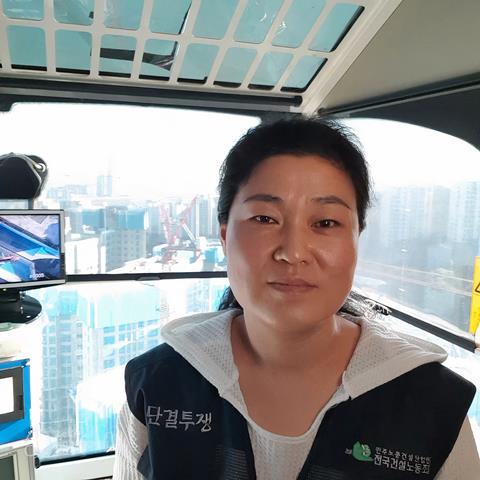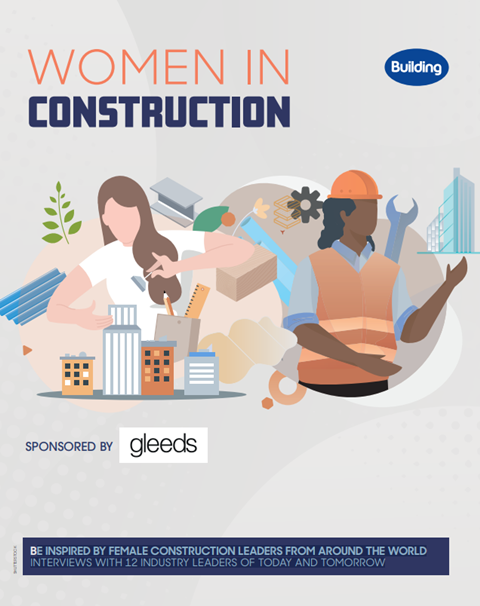This is part of a special report produced in partnership with Gleeds
A tower crane operator in Seoul, South Korea, Kim Kyung Shin has paved a fascinating route through the construction sector – and continues to play a significant role in carving out an improved path for other women who want to follow in her footsteps.
“There are so many things women can do on construction sites if we just forget about the stereotypes about men’s work and women’s work,” she says.

Kim’s journey into construction began with a key consideration: what sort of career would best suit her, regardless of gender stereotypes within her country. She says she felt sure that a typical office job would not suit her, nor a more technical career route, so she sought out a job in the heavy machinery field.
“At that time, working as a tower crane operator at a high altitude looked cool to me and I was curious about the job. I decided to try it,” Kim explains.
She says it took three months of training to get a certificate at a heavy equipment institute, before starting work for a tower crane rental company, which provides clients with the machinery and operators who run it.
>>Special report: Women in construction
But, Kim says, her most career defining moments have not happened in the cab of a crane but rather from her work within the Korean Construction Workers Union (KCWU), which is affiliated to the Korean Federation of Construction Industry Trade Unions (KFCITU) and the Korean Confederation of Trade Unions (KCTU), over the course of more than 15 years.
This has culminated in Kim working as a vice chairperson of the KFCITU for six years and serving as the chairperson of the BWI (��ɫ����TV and Wood Workers’ International) Asia-Pacific Women’s Committee for five years until 2021.
Talking about her career as an activist for women on construction sites, Kim says she owes a lot to those who had introduced a mandatory female representation rule in the union, adding that without the rule she would never have had the chance to engage in the international women’s committee.
She says the rule is particularly important as more than 90% of construction workers in South Korea are men, which means electing women leaders and carrying out women’s initiatives can be very difficult.
“The hardest part of working on initiatives for women in a construction trade union was to make people realise that there are also women workers at construction sites,” Kim says.
“It was and still is very difficult for me to see that people are talking about women workers and not doing anything about them, or women’s issues are always pushed back in priority.”
Asked what can attract more women into construction, Kim says the working environment needs to be improved a lot.
She says that while the number of women working in construction is increasing, there is still a lack of basic amenities such as female restrooms and locker rooms.
Kim does say these are on the rise. She also adds that educational institutions and systems should be created to improve women’s skills so they can work as skilled rather than unskilled workers on construction sites.
Kim says the influx of women into the construction industry will grow rapidly if they are provided with sustainable conditions and opportunities rather than being offered only auxiliary jobs at lower wages.
Download now



























No comments yet